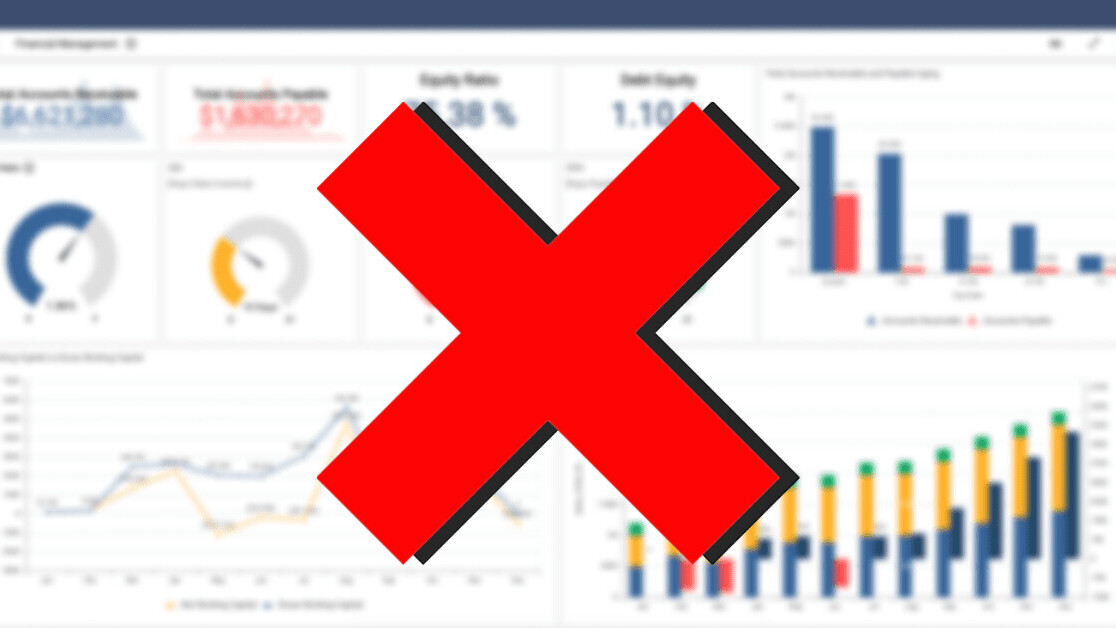
For the last 20 years, businesses have fallen hard for dashboards. It was the easy start to becoming an operationally sound and data-driven business. The trend grew, and now board members and executives expect interactive functions and explorable data as part of quarterly reports. Product or demand general managers, who might each drive sales targets and must choose between so many execution options, find that dashboard checks are a daily if not hourly requirement.
The analyst, whose work title could be just about anything, was part of this rising tide. But their individual path could be rough or easy, strategic or clerical, creative or tedious depending on the political landscape and technology choices of their company.
All of this will change in 2020, the year that dashboards begin to die.
Every business should have a speedometer. You should know the resources you’re burning and the velocity you’ve reached as a result. But today’s use of “data” and “dashboard” interchangeably is an oversimplification at best. Dashboards don’t drive a business revolution.
Dashboards alone fall short by:
- Taking forever to build, depending on the tool tradeoffs made between how analysts assemble them and how business units track targets.
- Going where they’re not needed — in areas where they don’t benefit decision-making, like recurring dashboards that served a one-time decision.
- Requiring viewers to revisit them and hold unfailing attention over time.
- Not providing inherent analysis and guidance; they provide the “what” but not “why”.”
At one time, it was necessary for a group to review dashboards to arrive at conclusions about what is happening, and through that meeting begin to ask questions around why. But people use the same tool to try (and fail) to figure out why, or they give up and just use intuition instead. When you have a hammer (dashboard), everything looks like a nail.
For data to reclaim its creative nature and become a source of business strategy and reinvention, we need to move beyond the dashboard. So if dashboards are the security blanket for those managing business as usual, what is the better path forward?
Many of us are already setting up for the next wave of business intelligence. We map our data to business logic by writing the code to measure metrics and relate them to one another. We put QA in place to make sure the data is good. Today we take these steps in the service of dashboards, but the same effort can move us beyond them.
Well-structured and well-defined metrics are the perfect training place for AI to learn what’s important so it can provide smart alerts. It’s the foundation that will make business information “push” instead of “pull.” It’s the way we reduce familiarity fatigue and aesthetic debates that might detract from the right insight and action. It’s the smart “check engine” light to complement your speedometer and gas gauge.
What does this mean for 2020 and beyond?
At this point, dashboards are impossible to live with and impossible to live without.
2020 will be the year that AI truly changes our approach, and allows businesses to collapse these less important dashboards into machine-monitored alert systems. We will begin to see appropriate visibility: a view given without the overhead of repetitive human monitoring.
As a result, we will turn our analytical minds towards more important questions — the “why” instead of the “what.” Wiser companies focus on a few core metrics and spend most of their time on this deeper analysis.
There are also ramifications for the job market: more functions will require basic data literacy, more execs will win larger influence through timely insight, while workers who don’t adopt analytical skills will be left behind. Privacy and security officers will face new concerns. For the analyst, the role magnifies as they become less of a dashboard builder and modifier, and tackle more of the critical business questions that drive real change.
Today, AI provides a navigable path out of the briar patch and not a magic bullet. It’s not going to solve all of our problems, but it will pull us out of the data chaos and unlock the very human ability to reason.
Get the TNW newsletter
Get the most important tech news in your inbox each week.





